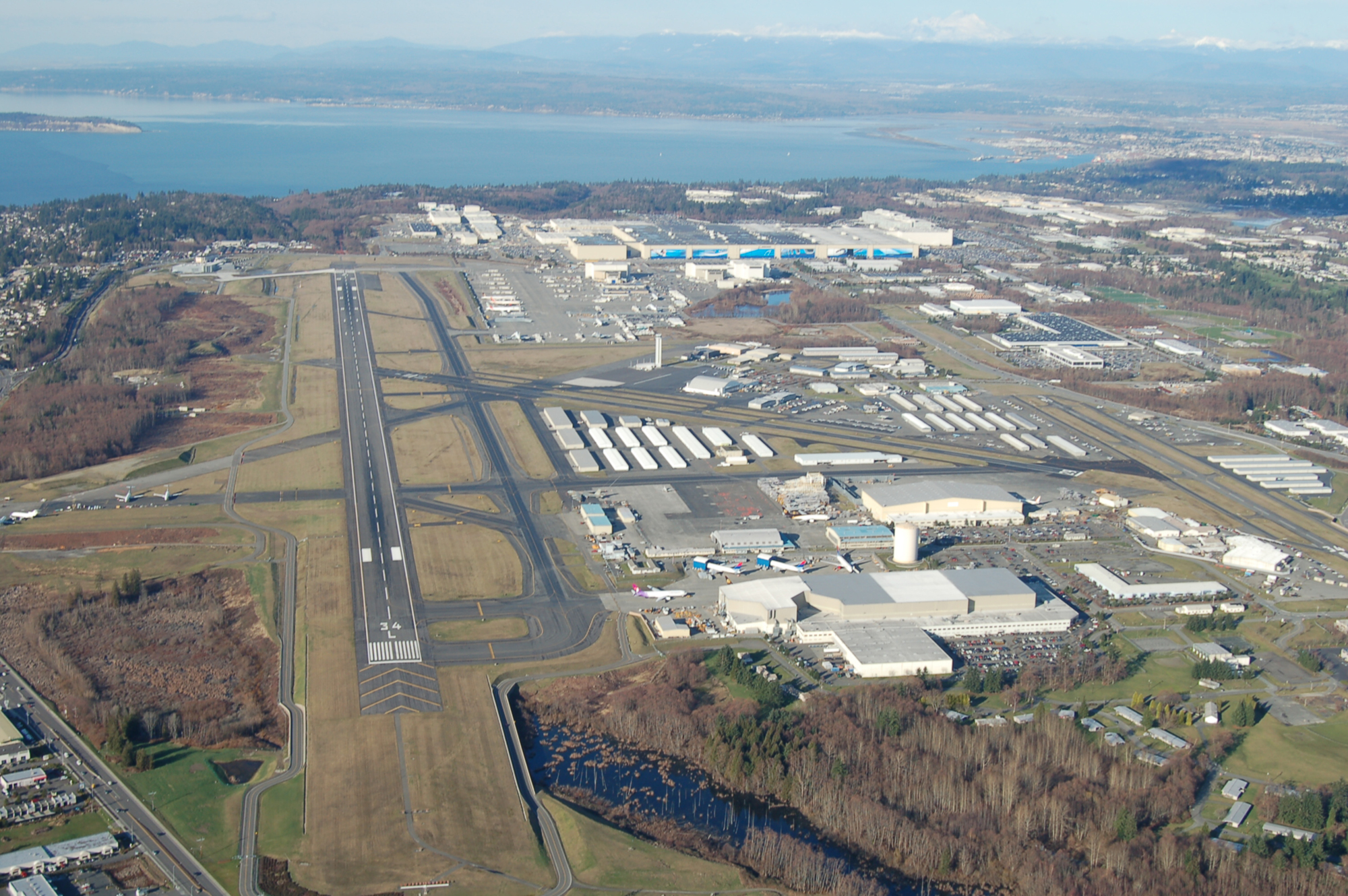
Supporters of bringing commercial air service are studying the economic benefits and planning a possible campaign to promote the change. Opponents in the county are equally adamant that air service would ruin home values and affect the environment.
By Terry Stephens
The debate is over between opponents and supporters of bringing passenger airline service to Snohomish County Airport/Paine Field (PAE) in Everett, Wash. Now, fundraising to influence the outcome has begun, even though no airline has shown interest in coming to the airport.
A Snohomish County business group, the Private Enterprise Coalition, has pledged to raise $100,000 to study and promote commercial air service at the county’s airport. The group will hire a consultant to determine the impact on the economy, said PEC committee chairman Greg Tisdel.
The group believes air service would benefit the economy and the people who now battle worsening congestion on Interstate 5 between Snohomish County and Seattle-Tacoma International Airport (SEA). A 2004 study by Mead & Hunt, a Eugene, Ore., air travel consulting firm, reviewed ticket sales in the region and concluded “market demand to support scheduled air service (at Paine Field) exists.”
Sea-Tac Airport is a rarity among large American cities; it has no smaller regional airports around it to offer alternatives for airlines and air travelers. PEC believes this situation supports its case for encouraging airlines to look at Paine Field. Mead & Hunt’s study also noted that although no airline has approached the airport about establishing service, the rapid growth in Snohomish County’s population continues to increase that “market demand.”
Building an initial terminal to handle passenger traffic at the airport would cost an estimated $3.2 million. The main runway would present no problem for handling regional jetliners, since Paine Field is already home to 747, 767, 777 and 787 airliners assembled in Everett by Boeing. Airliners of all sizes also come and go for maintenance services at Goodrich Aviation Technical Services.
In 2002, an economic stimulus plan, approved by the county council, recommended adding commercial flights at the field, as did a 2006 blue-ribbon panel appointed by Snohomish County Executive Aaron Reardon. But PEC member Tom Hoban said the group wants a more comprehensive study, with more factual information before it moves ahead with its campaign. Joining the PEC in supporting commercial air service are the Everett Area Chamber of Commerce and the Snohomish County Republican Party.
Opponents in Mukilteo, a growing community on northwest edge of the airport, have formed Save Our Communities to protest air service at the airport and to oppose the recent PEC move. SOC has asked the city council for $275,000 to conduct its own research to campaign against air carrier service. In May, the Mukilteo City Council unanimously approved the request, allowing $25,000 for SOC’s education fund to explain the harmful impacts of air carrier service on the area and established a $250,000 reserve fund for future information programs or litigation on the issue, as a way of showing the city’s serious opposition.
“I think it’s a fantastic signal to send to the rest of the county and the county council—the city of Mukilteo is going to take a diligent stand against this,” said Don Doran, former Mukilteo mayor and a leader of SOC. “We take the threat very seriously. The city is going to back up its words with a defense fund.”
SOC believes the additional noise and frequent flights would ruin their quality of life, lower property values and negatively impact schools, public health and the environment. It has convinced several town councils south of the airport to pass resolutions against air service.
“PEC has started out with a totally biased and unfair study, which we would discard as worthless unless they look at the total economic impact,” said Greg Hauth of Mukilteo, SOC president.
Most of last year, PEC and SOC groups and city officials faced each other on a 12-member, fact-finding body convened by Reardon to examine the 1978 Mediated Role Determination document, which originally encouraged the growth of aviation services, including private and business aviation, air taxis and commuter service, but discouraged commercial air service.
The MRD study panel never settled the issue, agreeing only that the review group had no elected or appointed power to decide anything. So, both sides of the issue were included in the inconclusive 188-page report to the county council early this year. Opponents hoped the council would approve a new document opposing air carriers, and supporters hoped the MRD findings would be dismissed as a murky document with no legal standing.
In mid-June, the Snohomish County Council took a hands-off position, refusing to revise or amend the hotly debated document.
“This is much ado about not much,” said Councilman John Koster. “No airlines have even expressed interest in bringing service to Paine Field.”
Supporters of airline service point to four major factors that they believe will determine whether Paine Field adds commercial air service at any time, on any scale.
First, the MRD document negotiated between anti-airport growth groups and the county government more than 30 years ago was only an unofficial policy that recommended discouraging commercial air service, but it was never an enforceable document.
Second, federal regulations passed after the 1978 MRD agreement removed any option for airports that receive federal funds, as Paine Field has for decades, to refuse to establish airline service, if there is an expressed interest. Airports gave up that right in return for federally mandated noise limits on late model engines, which have dramatically quieted later model airliners.
Third, in 1990, Washington adopted the Growth Management Act, which considers airports to be “essential public facilities,” which are to be managed for the benefit of the state’s citizens.
Fourth, this summer, Washington is completing an assessment of its airports, as well as estimating each facility’s future need for growth and expansion. This report alone is expected to impact greatly how future roles of Paine Field and other airport facilities are determined.











